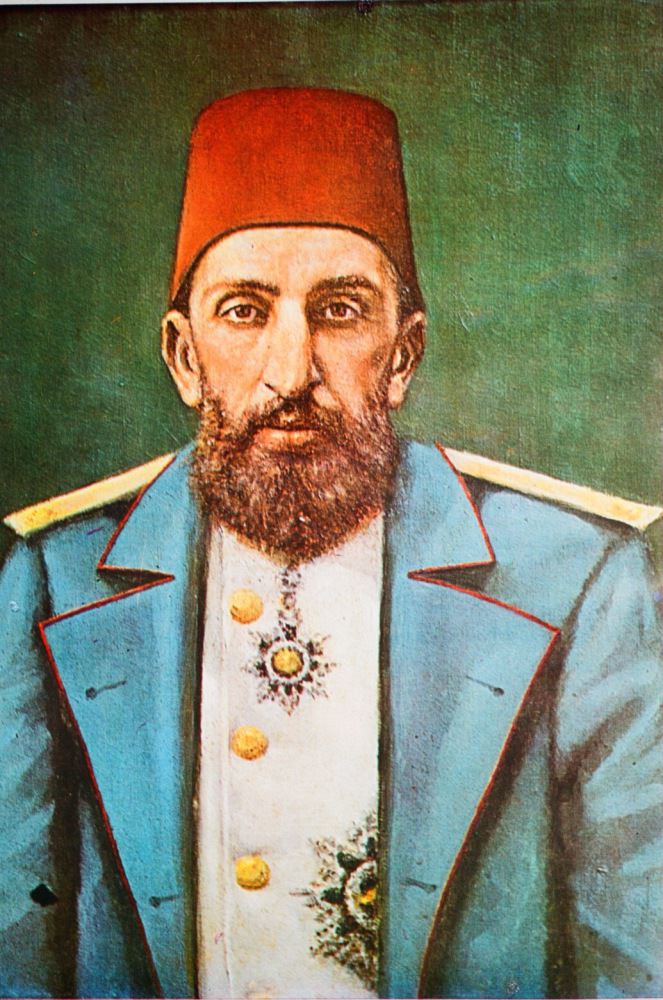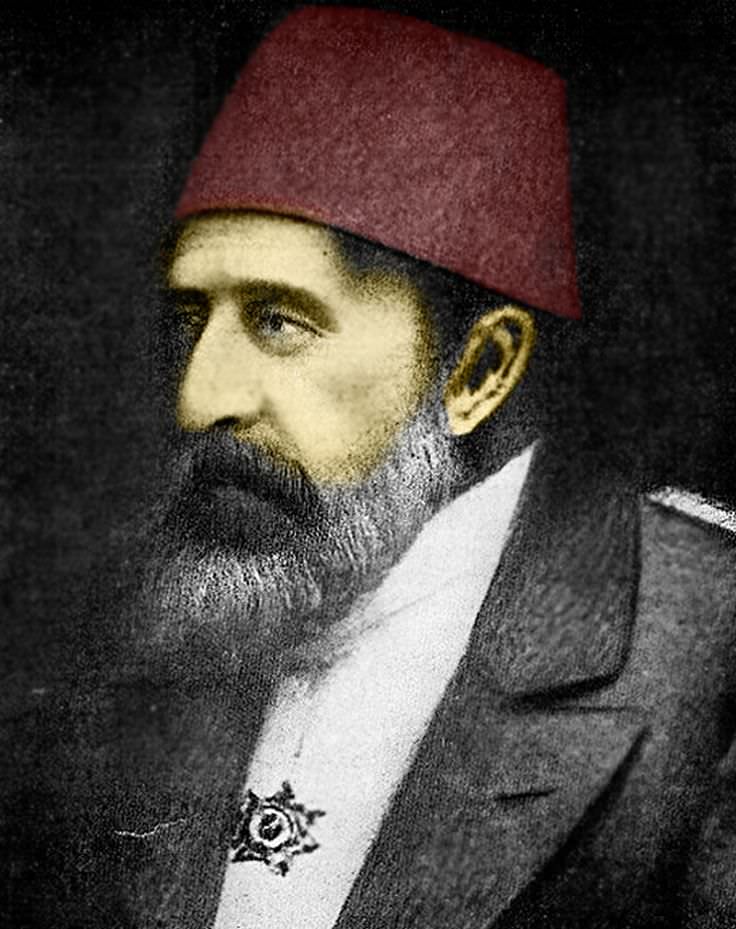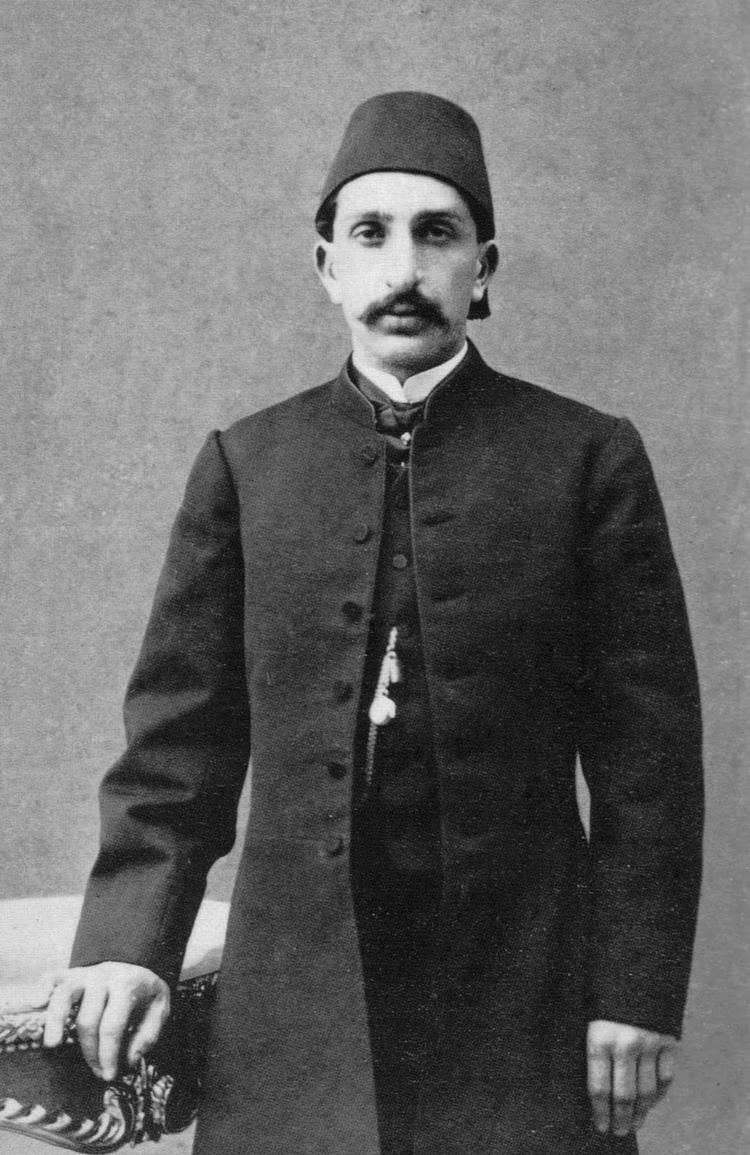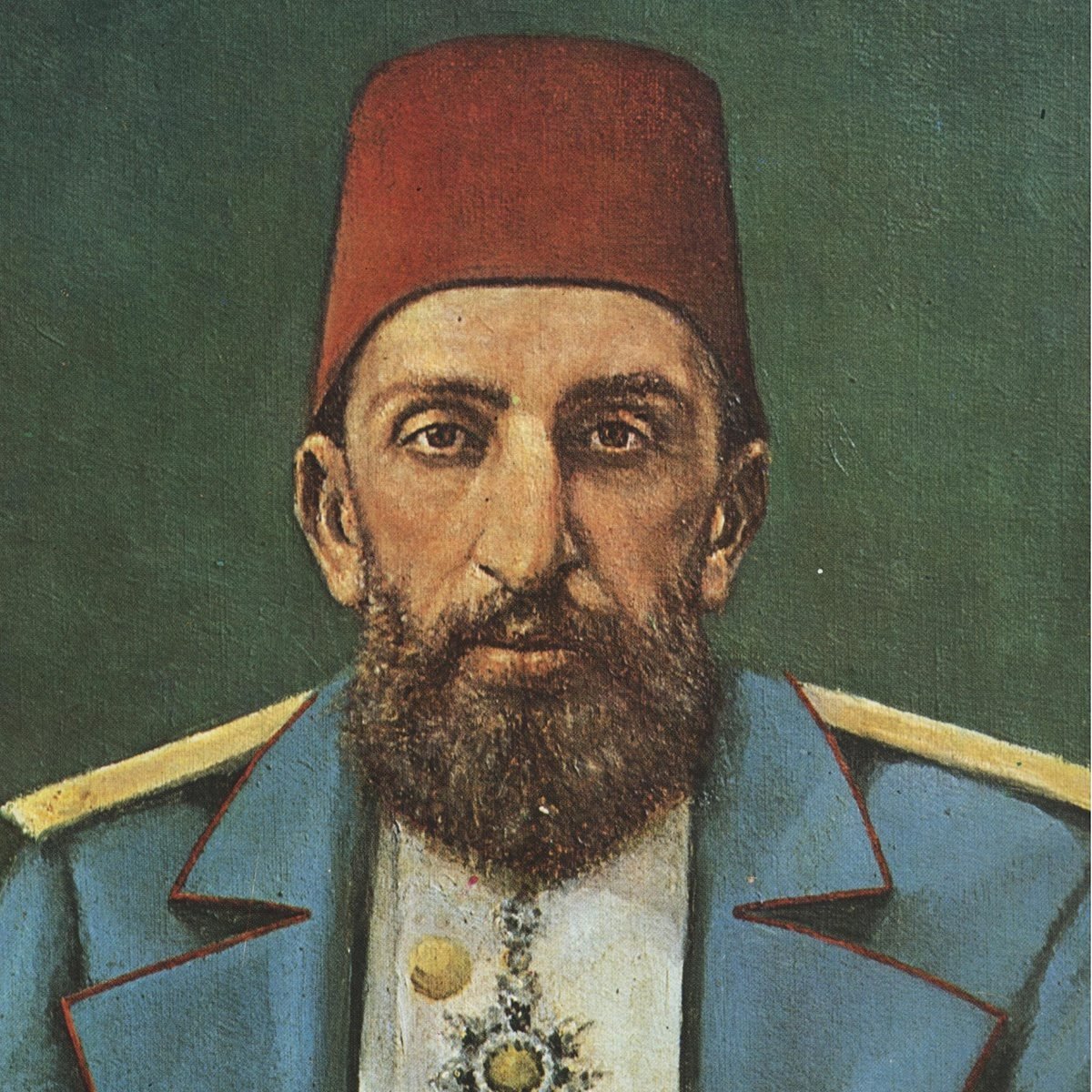Abdul Hamid II, Sultan of Turkey posters & prints by Anonymous
.jpg/revision/latest?cb=20180825160534&path-prefix=es)
Abdul Hamid II Wikia Hitler Parody ES Fandom
Abdul Hamid II (21 September 1842 - 10 February 1918) was the 34th Sultan of the Ottoman Empire. [1] He was the last sultan to have complete control over the Empire. He was responsible of the Hamidian massacres. Killing between 100.000 - 300.000 Armenians. He witnessed many revolutions and wars.

Sultan Abdul Hamid II YouTube
Abdülhamid II His Imperial Majesty, Sultan of the Ottoman Empire and Caliph of Islam (September 21, 1842 - February 10, 1918) was the thirty-fourth sultan of the Ottoman Empire. He oversaw a period of decline in the power and extent of the Empire, ruling from August 31, 1876 until he was deposed on April 27, 1909.

AbdulHamid II, said the Bloodthirsty , the 34th Sultan of
Introduction. The place occupied by Sultan Abdülhamid II in late Ottoman and Turkish history is as important as it is controversial. As the only reign in the late Ottoman period to be known by the name of its sultan, the 'Hamidian' period (1876-1908) stands out among the other eras of the nineteenth- and twentieth-century Turkish history.
Abdul Hamid II — Google Arts & Culture
Abdul Hamid II is the 138th most popular politician (up from 146th in 2019), the 27th most popular biography from Turkey (down from 25th in 2019) and the 15th most popular Turkish Politician. Abdul Hamid II was the last Caliph of the Ottoman Empire. He is most famous for being the Sultan of the Ottoman Empire from 1876-1909.

Abdul Hamid II (18421918), last Sultan of Turkey remarkable collection
Abdulhamid or Abdul Hamid II was the 34th sultan of the Ottoman Empire from 1876 to 1909, and the last sultan to exert effective control over the fracturing state. He oversaw a period of decline, with rebellions , and presided over an unsuccessful war with the Russian Empire followed by a successful war against the Kingdom of Greece in 1897, though Ottoman gains were tempered by subsequent.

“Social media is a menace to society” Humphrey Fellows at Cronkite
The reign of Sultan Abdülhamid II began on August 31, 1876, during a period of profound crisis for the Ottoman Empire. In 1878 the sultan inaugurated a new course in domestic and foreign policies that had a lasting impact on the history of modern Turkey and the Middle East.

Abdul Hamid II.
Explore the Abdul-Hamid II Collection of Photographs and Books at the Library of Congress, a unique and valuable source of visual and textual information on the Ottoman Empire in the late 19th century. The collection includes over 1,800 photographs and 1,300 books and serials, covering various aspects of the empire's history, culture, geography, and modernization.

The Powers Sail In
Abdul Hamid II (1842-1918) was the son of Sultan Abdul Majid (1823-1861) and a Circassian mother. As a child, he received an education worthy of a caliph and Sultan. His tutors included some of the leading ulema and shaykhs of Istanbul. He was well versed in the Qur'an, the Sunnah of the Prophet and in the Hanafi school of Fiqh.

Abdülhamid II was determined to reverse the retreat of the Ottoman state, and decided that the best way to do it was through the revival of Islam throughout the Muslim world and pan-Islamic unity, centered on the idea of a strong caliphate.

Abdul Hamid II last Sultan of Turkey . Called the Great Assassin
Hamidian massacres, series of atrocities carried out by Ottoman forces and Kurdish irregulars against the Armenians in the Ottoman Empire between 1894 and 1896. They are generally called the Hamidian massacres—after the Ottoman Sultan Abdülhamid II, during whose reign they were carried out—to distinguish them from the later Armenian Genocide, which began in 1915.

Sultan Abdul Hamid 2 AbdulHamid II, sultan of the Ottoman Empire
Abdülhamid II, c. 1890. The reign of Abdülhamid II (1876-1909) is often regarded as having been a reaction against the Tanzimat, but, insofar as the essence of the Tanzimat reforms was centralization rather than liberalization, Abdülhamid may be seen as its fulfiller rather than its destroyer.
Abdul Hamid II — Google Arts & Culture
Abdulhamid or Abdul Hamid II was the sultan of the Ottoman Empire from 1876 to 1909, and the last sultan to exert effective control over the fracturing state. The period when he reigned in the Ottoman Empire is known as the Hamidian Era. He oversaw a period of decline, with rebellions , and presided over an unsuccessful war with the Russian Empire followed by a successful war against the.

Abdul Hamid II, Sultan of Turkey posters & prints by Anonymous
In 1884, Sultan Abdul-Hamid II gifted the Library of Congress with a collection of Ottoman Turkish, Persian, Arabic works that he had richly embossed with this inscription in English, French and Ottoman: "Gift made by H.I. M. the Sultan Abdul-Hamid II to the national library of the United States of America through the Honorable A.S. Hewitt.

Abdul Hamid II Celebrity biography, zodiac sign and famous quotes
In 1884 Sultan Abdul-Hamid II gifted the Library of Congress with a collection of Ottoman Turkish, Persian, Arabic works that he had richly embossed with this inscription in English, French and Ottoman: "Gift made by H.I. M. the Sultan Abdul-Hamid II to the national library of the United States of America through the Honorable A.S. Hewitt Member of the House of Representatives A.H. 1302-1884 A.D."

Abdul Hamid II Alchetron, The Free Social Encyclopedia
The Young Turk Revolution (July 1908) was a constitutionalist revolution in the Ottoman Empire.The Committee of Union and Progress (CUP), an organization of the Young Turks movement, forced Sultan Abdul Hamid II to restore the Constitution, recall the parliament, and schedule an election.. In 1876, a constitutional monarchy had been established under Abdul Hamid during a period of time known.

Sultan Abdul Hamid 2 astonishingceiyrs
ABDUL-HAMID II (1842-1918), sultan of the Ottoman Empire from 1876 to 1909. Abdul-Hamid II's reign as sultan was marked by the attempted promulgation of a constitution in 1876, his subsequent suppression of the constitution, and, in 1908, the Young Turk Revolution that forced its reinstatement.